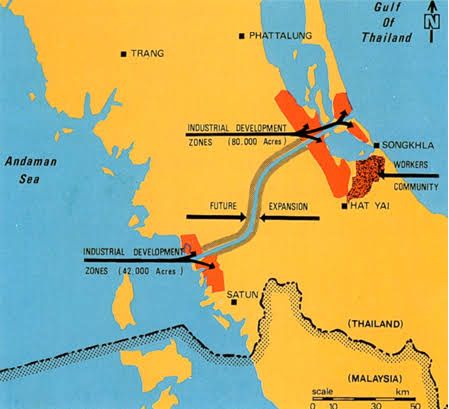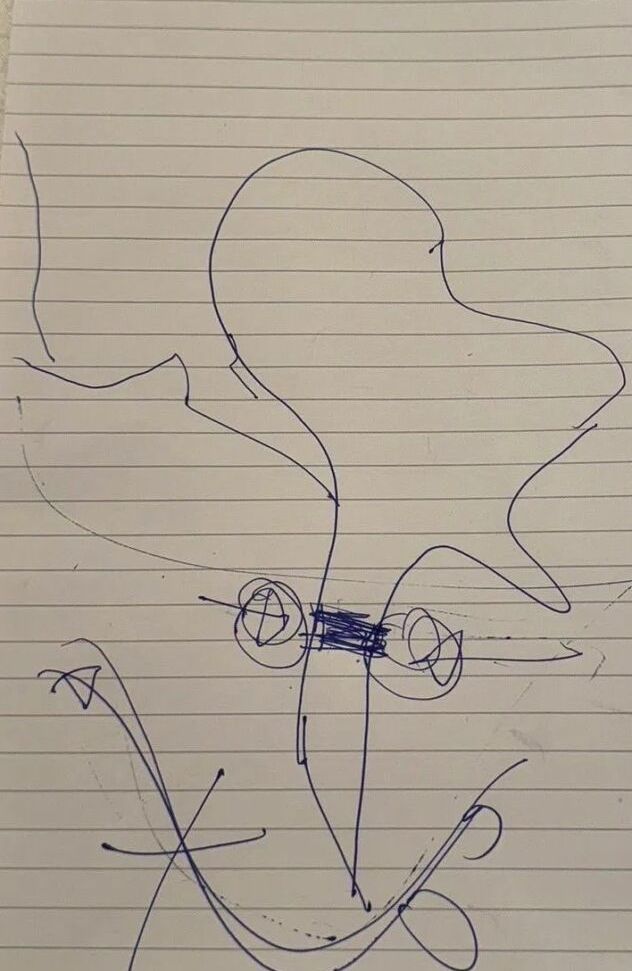
1869. That’s one of the many years which presented to us a revolution in mankind’s progress. After 10 long years of toiling away, employing over 1.5 million people, and funded by the French and Egyptian coffers the Suez Canal announced itself. Facilitating over 12% of the global shipping routes, you can’t help but appreciate the engineering marvel that is the Suez Canal.
The Suez Canal though operated by the Egyptian state, has its bloody history. Initially shared between the French and the British, the governing body of the canal – the Suez Canal Association was nationalization by the Egyptian state in 1956. In the days following the decision, the world found itself witnessing yet another possible conflict between Egypt and the combined forces of Britain and France, barely 10 years after the horrors of World War 2.
Ominously, a similar story might find itself being played out 7,000 km east over the next two decades if the Kra Canal Project comes to fruition. Where is this Kra Canal I’m talking about? Well, every affluent Indian college student’s fourth-year dream country – Thailand.
Thailand. A land awash of cultures, cuisine and experiences. At first glance, and rightly so any individual would associate Thailand with the parties, the floating markets and vibrant nightlife. However, in a broader geopolitical context, you’d find yourself surprised at how well-positioned and sandwiched Thailand finds itself in.
Sandwiched right in between the burgeoning Asian Tigers, two geopolitical giants in India and China, Thailand seems to believe that it has found its claim to fame on the world stage by proposing the Kra Canal Project. And it seems to have found a soulmate in China, supporting its every move.
Now, trust me building a canal like this seems redundant indeed. But it’s the thought that counts. Take a look at this,

You’d think this is an absolutely cute doodle by some 5-year-old trying to draw the Indian coast, but instead drawing a KFC Chicken Wing. Well, you’d be dead wrong. That’s the doodle by the Thai Prime Minister during one of his meetings at the BRI (Belt & Road Initiative) Forum. Well, now doesn’t the story seem to spice up a little bit more?
Though outlandish in its scale and size, the thought of building such a canal remains a persistent dream of some Thai politicians. And it’s this childish dream is something that Chinese diplomats love to exploit. After all, this dream allows them to turn a dagger a little deeper into Indian observers. Well, why is this so?
Proposed first in the late 17th Century, this 300-year pipe dream is expected to be roughly around 100 km in length, stretching from one end of Thailand facing the Indian Ocean to the other end of Thailand bordering the Pacific.
For this, let’s zoom out a little. Take a broader look at the South Asian subcontinent, in particular, focus a little south of Andaman and Nicobar.
What you see over here, is the Strait of Malacca. Though relatively unimportant, this little strait transports over 40% of the global trade. A LOT more than the Suez Canal, isn’t it? Well, not just that. It’s this little strait that even makes Singapore’s existence relevant. This is where the strategic significance of the Andaman and Nicobar Islands comes into play.
Now, with more than 40% of the global trade and over 90% of petroleum flowing through the Strait of Malacca with the majority of it sourced to China, only one country has a significant military presence – courtesy of course the Andaman and Nicobar Islands. It’s this military hegemony of the Malacca Strait that India has that still deters China from explicitly declaring itself the winner and the sole superpower of the South China Sea. With the majority of the traffic flow protected and facilitated by India due to its presence in the Malaccan strait, Beijing finds it difficult to execute what it calls the String Of Pearls, the maritime arm of the Belt and Road Initiative.
Well, let’s now return to the Kra Canal Project. Proposed first in the late 17th Century, this 300-year pipe dream is expected to be roughly around 100 km in length, stretching from one end of Thailand facing the Indian Ocean to the other end of Thailand bordering the Pacific. While ambitious indeed, this project was consecutively discarded due to the insurmountable costs which come associated with it. Costs, which were not just monetary but instead ecological too.
The Project is suggested to improve trade times by roughly 4 days, slashing over 1,200 km of distance-travelled all while improving access between the two oceans.
To improve on the original, the Thai PM seems to have an improvement. He argues, that let’s reduce the canal size, to around 50km and connect the rest through landbridges. Okay, a plausible assumption. What would that require? Two ports, one off the coast of the Indian Ocean and one off the Pacific. Further, the construction of new highways, railways and labour costs all would pile up reducing the original cost to roughly 600 billion Thai Baht (USD 18 billion), a conservative estimate after all.
The upsides seem to be significantly incentivizing. The Project is suggested to improve trade times by roughly 4 days, slashing over 1,200 km of distance-travelled all while improving access between the two oceans. It seems promising, surely. But what about the political stability of the South Asian region?
Well, first in a local context, the project cuts through ethnic lines, dividing Thailand into two parts, the North occupied by the Buddhist majority and the South occupied by the Muslim minority. Further, you cannot help but not acknowledge the significant ecological loss that would be bound to incur through this expansion process.
Kra Canal would allow China to strategically position itself and its naval bases in an area directly within the Indian sphere of influence.
Well, let us now yet again zoom out to a broader context. Well, in terms of the existence of the Kra Canal, we’d find India stuck in a precarious position. In particular, this project would allow China to strategically position itself and its naval bases in an area directly within the Indian sphere of influence. To put this in terms we Indians understand, well this would be akin to the Chinese placing weaponry near Arunachal Pradesh with free access towards the Assam Hills. This is clearly, bound to prove a significant threat towards India’s strategic interests and in a larger context, pose a threat towards the stability of the South China belt altogether.
While the given project seems to be rather unlikely, it serves as an efficient propaganda piece that can actively be peddled by the media to develop a narrative of fear of hasty action. A prudent and nuanced understanding of the historical position would thus provide us with an answer, and guide us towards a more rational path.
(Divith Narendra is a student of data science, economics, and business with a passion for integrating data and statistics. He writes extensively on industry trends and geopolitics. His works were featured at the G20 and published by Cambridge Union Press. Views expressed are the author’s own)

The article offers a compelling analysis of the Kra Canal’s potential impacts, emphasizing its geopolitical implications and environmental challenges. By outlining the strategic significance of the canal for China and the potential threat it poses to India’s influence in the region, the author effectively highlights the broader consequences for South Asian stability. Additionally, the discussion on the environmental costs and the division it could create within Thailand adds depth to the analysis, making it clear that the project is fraught with complex challenges beyond its economic incentives. Will be interesting to see how India under Modi 3.0 responds to the new opportunity as well as a threat in the region.
Great timely piece. I am surprised that this important issue is not discussed in the mainstream media in India. If China is allowed to have a free run in its agenda to fund the project or influence Thailand, it will be detrimental to the freedom of navigation in the region. India has to get involved in the project and influence Thailand to involve all major players so that China does not have the major say.